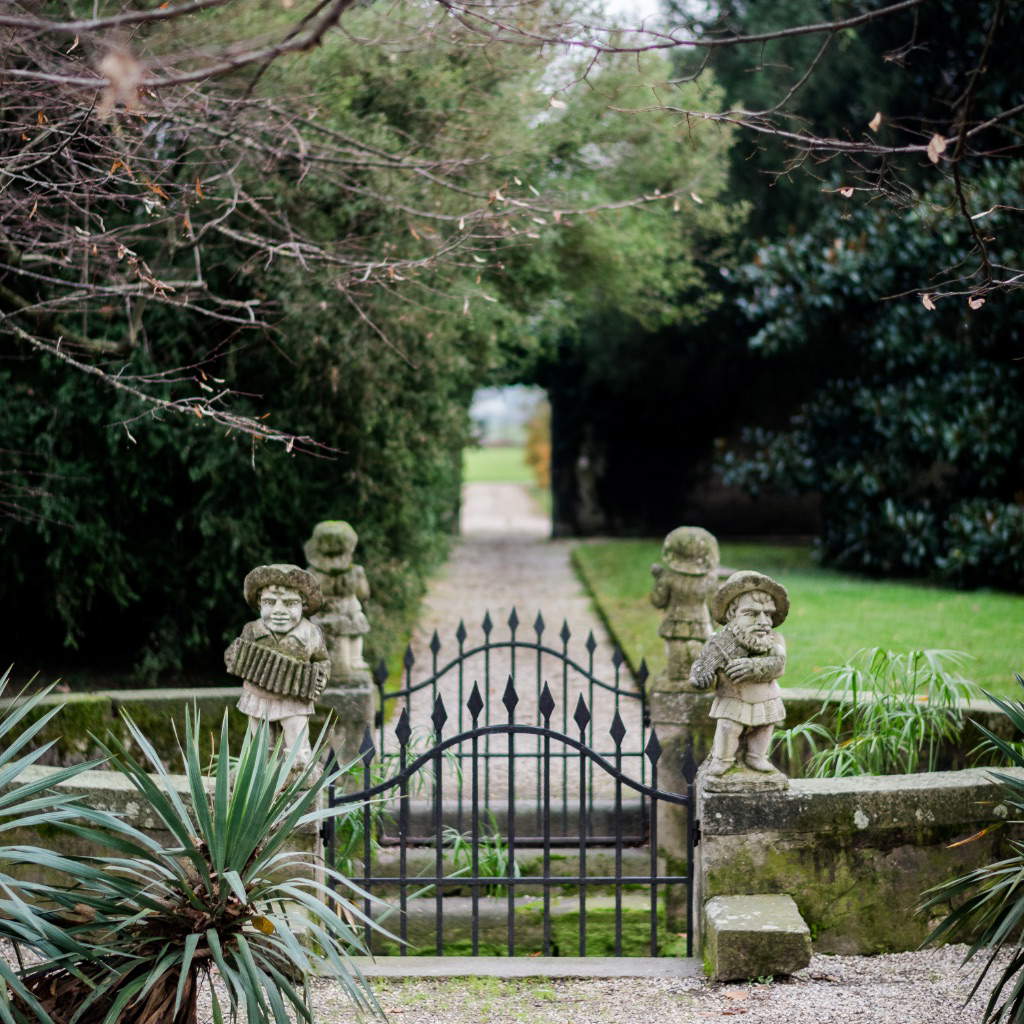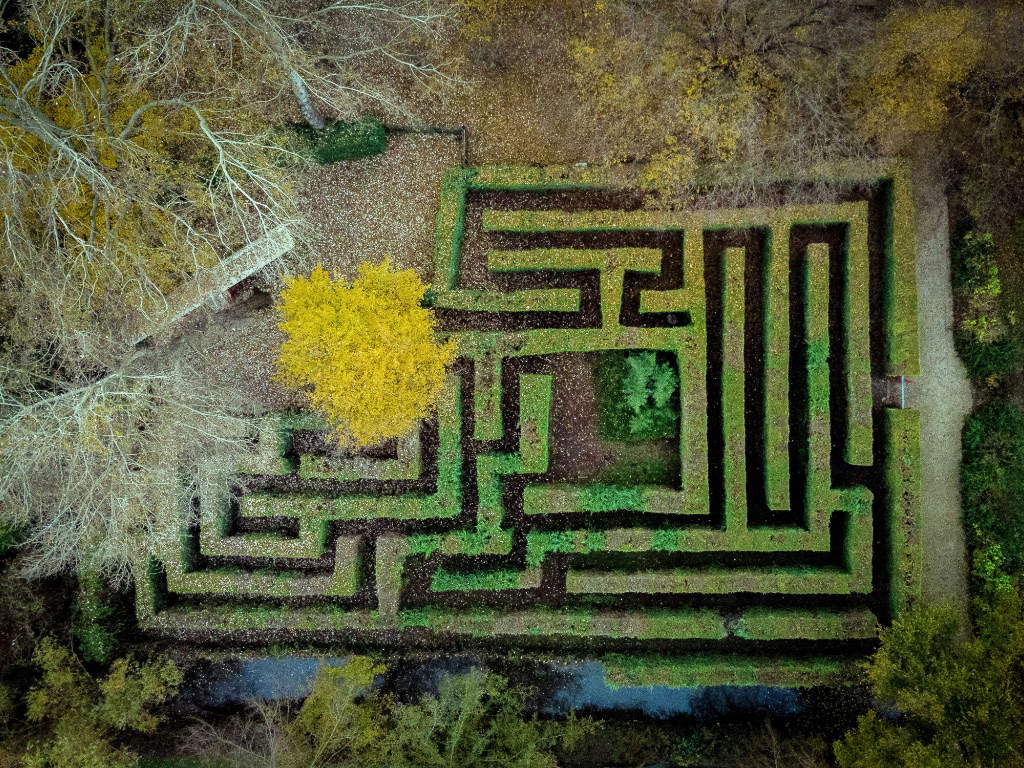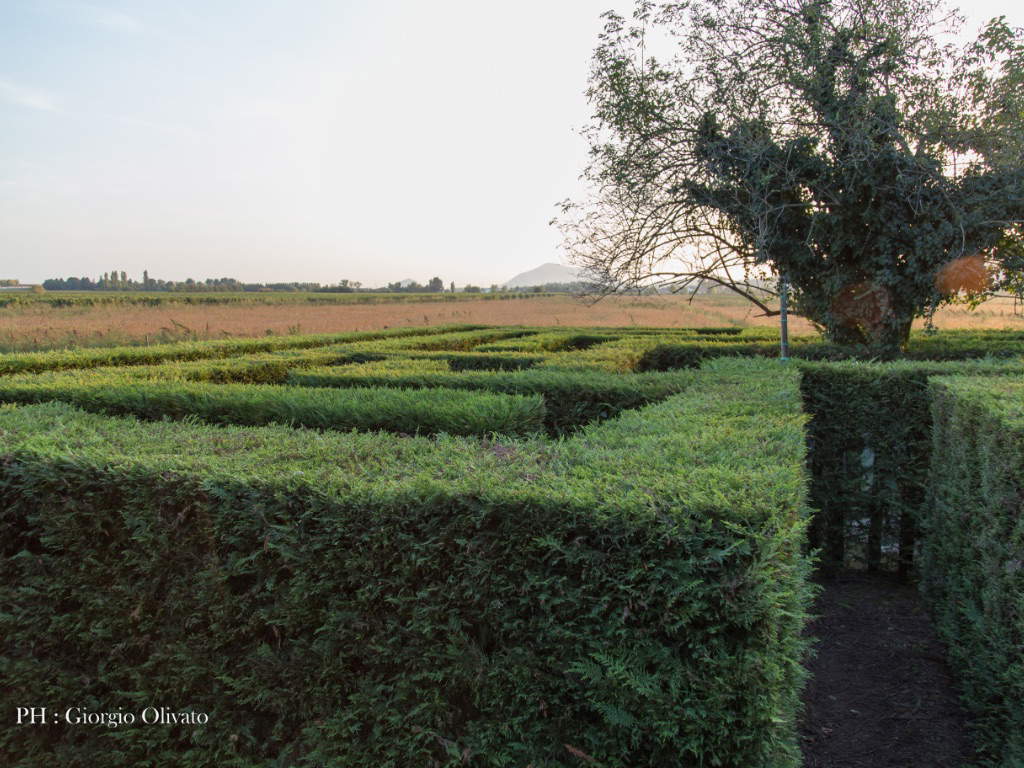Nestled in a remote and rarefied atmosphere, in the heart of the municipality of Due Carrare, stands the Castle of San Pelagio. It is an ancient building that, despite its much more recent reconstruction, entangles its roots with the famous Carraresi family who were lords of Padua from 1318 to 1405. Of its original medieval structure, only the crenellated tower remains unaltered today, while the residential part underwent renovation in 1775 by the Zaborra counts, who still retain ownership. The noble family considerably enlarged both the gardens and the structure of the castle, transforming it into the opulent structure we admire today. The castle has a long and imposing façade that embraces the two wings separated by the central tower and opens directly onto the street with a garden, also divided into two sections by a “representative avenue”: the main garden of the Villa composed of four flower beds where the most fragrant roses bloom, and where a water lily pond is dug in the center.
Perhaps as a joke or for fun, the castle garden also holds two green labyrinths: the "Labyrinth of the Minotaur, " which evokes the myth of Icarus, and the “Maybe that Yes Maybe that No” labyrinth, which recalls the well-known D’Annunzio novel. They were both created in the early 2000s, after a visit by Countess Ricciarda Avesani Zaborra to an exhibition of paper labyrinths: inspired, she entrusted the design of the two mazes to architect Antonio Antonucci, who imagined the two paths side by side and connected, suspended above rivulets of water, something that has no equal.



The first of these, also known as the “doodle of God,” reiterates the journey into mystery and sacredness, etched deeply into human memory through ideograms that endure the passage of centuries. A particularly significant symbol is that of the Minotaur, a central figure in the labyrinth who, according to Jorge Luis Borges, may be the pale shadow of even darker and more ancient myths. The path to the Minotaur is thus intrinsically linked to the mistakes made along the way, in a journey that reflects the complexity of life and aims precisely at the wandering wanderings typical of every human being.
In the course of the exploration, one comes across a small bridge, where the presence of a black and white sail suspended over the water invites one to reflect on the tragic events of the myth of Theseus and his father Aegeus. Indeed, the myth tells how Aegeus, ruler of Athens, shared his throne with his son Theseus and together, they managed to defeat the rebellion of the Pallantids, the fifty sons of Pallas, but fate separated them forever when Theseus embarked for Crete, determined to free the Athenians from the blood tribute imposed by the Minotaur. Before departure, father and son established a pact: in the event of victory, Theseus would replace his ship’s black sail with a white one, a signal visible from afar of the mission’s successful outcome. However, the joy of victory was dimmed by a simple but fatal oversight of the young man who, after defeating the Minotaur and freeing his people, forgot to change the sail, unintentionally sealing his father’s fate. Aegeus, watching the horizon anxiously, saw his son’s ship approaching with the black sail still waving.



Devastated by the thought that Theseus had failed the test and had been killed by the monstrous Minotaur, believing in the betrayal of fate, he threw himself into the waters of the sea, which from that moment took his name, thus sealing the tragedy of a family history broken by a simple mistake. The labyrinth bridge thus becomes a symbol of connection between the mythological past and our existence, a footbridge by which to cross the turbulent waters of life. But the labyrinth of San Pelagio, with its double valence, adds further layers of meaning to this symbolic journey: on the one hand, it evokes the mischievous labyrinths of Venetian villas, places of intrigue and secret loves, and on the other hand, it recalls the mythological labyrinth of Knossos, linked to the tragic fate of Icarus and the constant human quest for flight. The Castle of St. Pelagius, so steeped in symbolism, becomes a monument to the complexity of human existence, weaving past and present into a compelling web of myths and stories.
Inspired instead by Gabriele D’Annunzio, but especially by his last novel, written between 1909 and 1910, is the labyrinth “Forse che sì, forse che no.” In the summer of 1917, San Pelagio Castle acquired great strategic importance during the Great War, and the Zaborra family entered into a lease agreement with the Italian army, allowing for the creation of an airfield and the occupation of a section of the villa. Thus, the apartments on the second floor became the residence of Major Gabriele d’Annunzio (who, by the way, left from here for the flight over Vienna) and today, its rooms have been faithfully restored through archival sources, preserving precious mementos of the poet-soldier’s life and aerial exploits along with the Zaborra family’s furnishings.The labyrinth, then, is a tribute to Gabriele D’Annunzio and is an intricate, unidirectional maze with no dead-end alleys, winding along a path that leads to its central form, where the mysterious motto is written, “Maybe that yes, maybe that no.” This enigmatic phrase, which unfolds along the path of the labyrinth and has spanned the centuries, even gaining the attention of D’Annunzio, seems to have originated from an “amorous frottola,” a polyphonic vocal composition with popular roots, and it is said that Francesco II Gonzaga, duke of Mantua, drew it from this musical genre.Continuing the exploration, one will find at its center an ingenious play of mirrors that alludes to the concept of the “double,” creating a sense of estrangement and challenge to perception where one will also find an elder tree, laden with myths and magic, that offers inspiration for telling fairy tales to young visitors.
 |
| Between the Minotaur and D'Annunzio, the two labyrinths of the Castle of San Pelagio |
Warning: the translation into English of the original Italian article was created using automatic tools. We undertake to review all articles, but we do not guarantee the total absence of inaccuracies in the translation due to the program. You can find the original by clicking on the ITA button. If you find any mistake,please contact us.